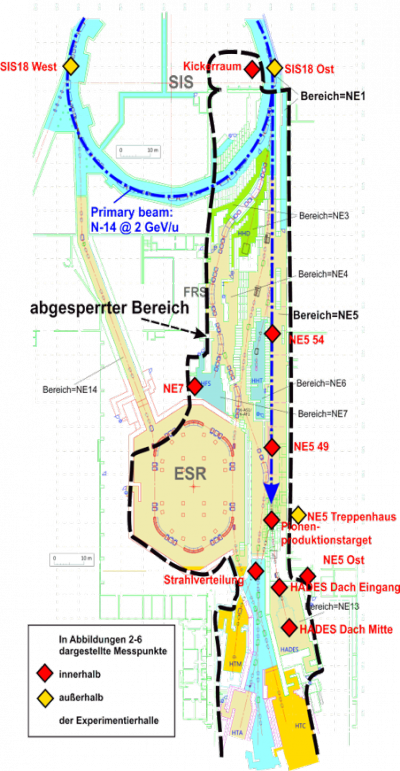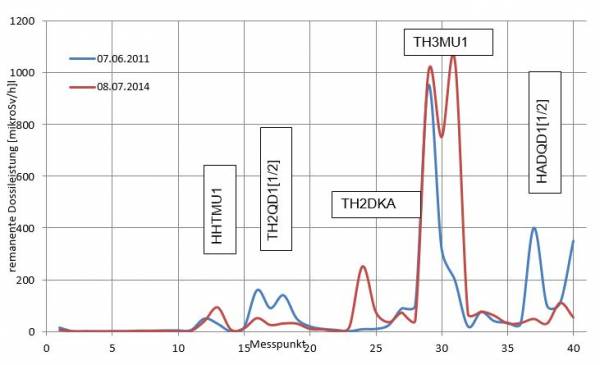Table of Contents
HADES Upgrade
HADES experiment uses two kinds of beams: low intensity heavy ion beam which hits target inside the experiment (called HADES target) or pion beam produced by an interaction of high-intensity ion beam with another target, upstream of the Hades target. This target is called pion production target. The pion production target is hidden in a bunker for radiation shielding and is remotely controlled.
The beamline lies completly within NE-5 zone.
For experiments with HADES target a moderate beam intensities (<10^7 ions/second) are needed. Beam is extracted slowly (spills of about 10 s). The ion type is Au or Ag. Proton beam is a special case. It should be produced in synchrotron with the highest momentum possible (E=4.5 GeV). The protons will be used for strangeness production. Finally, for pion beams, the highest possible primary beam intensities are required. In 2014 it was about 10^11 nitrogen ions per spill, which were producing about 4*10^5 pions.
- Proposal 2016 Verbesserungsvorschlag für Strahlführung SIS18-HADES
- Summary 2019 HADES Upgrade Zusammenfassung
Motivation
HADES is a fixed target experiment using SIS18 heavy ion beams. It investigates the microscopic properties of matter formed in heavy-ion, proton and pion - induced reactions in the 1-3.5 GeV/u energy regime. In 2014 HADES used a secondary pion beam produced by interaction between high-intensity nitrogen primary beam and a beryllium target. In these conditions beam losses, generated by slow extraction and beam transport to the experimental area, led to activation of the beam line elements and triggered radiation alarms. The primary beam intensity had to be reduced and the beam optics modified in order to keep radiation levels within the allowed limits. Similar beam conditions are requested by HADES experiment for upcoming run in 2018 and in the following years. Therefore, a number of measures have been proposed to improve beam transmission and quality. These measures are: additional shielding, additional beam instrumentation, modification of beam optics and increase of vacuum chambers' apertures in critical locations.

